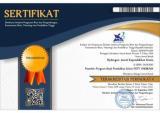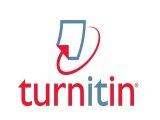Development of Website-Based Learning Media on Reaction Rate Material to Improve Student Learning Outcomes
Abstract
This development research aims to describe the feasibility of website-based learning media for reaction-rate material. The feasibility of learning media is reviewed in terms of validity, practicality, and effectiveness. Media validity is measured by content validity and construct validity. The practicality of the media is measured by student responses and activities. Effectiveness is measured by the percentage of classical completeness and the improvement of students' learning outcomes. The research method used in this research is Borg and Gall's Research and Development (R&D) method, which has been modified by Sukmadinata. Media trials were conducted at SMA Negeri 20 Surabaya on 33 students of class XI MIPA 2 who had previously received reaction rate material. This website-based learning medium is declared feasible. The results of content and construct validity show valid results in each aspect with a mode between 4 and 5. Practicality results show that web-based learning media is practical with 98,10% of relevant student activities at the first meeting and 99,05% at the second meeting, while the percentage acquisition of each aspect in the student response gets a percentage of 90%. The results of the effectiveness of learning media obtained classical completeness results of 87.9% and an N-Gain score of 0.78. This is supported by the results of the Paired sample t-test of 0.000, which means there is a significant average difference in learning outcomes.
Keywords
Full Text:
PDFReferences
Cakmakci, D., Donnelly, J., & Leach, J. (2003). A Cross-Sectional Study of the Understanding of the Relationships Between Concentration and Reaction Rate Among Turkish Secondary and Undergraduate Students. European Science Educational Research Association (ESERA) Conference.
Harmoko, T. J., Karmanto, & Suprihatiningrum, J. (2017). Pengembangan Media Pembelajaran Kimia Berbasis Web untuk SMA/MA. Jurnal Pendidikan Sains (JPS), 5(2), 113–119.
Hasibuan, A. T., & Prastowo, A. (2019). Konsep Pendidikan Abad 21: Kepemimpinan dan Pengembangan Sumber Daya Manusia SD/MI. Magistra, 10(1), 26–50.
Kustandi, C., & Sutjipto, B. (2011). Media Pembelajaran Manual dan Digital. Bogor: Ghalia Indonesia.
Nurchaili. (2010). Pengaruh Media Pembelajaran Berbasis Teknologi Informasi dalam Proses Pembelajaran Kimia Terhadap Peningkatan Hasil Belajar Siswa. Jurnal Pendidikan Dan Kebudayaan, 16(6), 648–658.
Rahman, S., Munawar, W., & Berman, E. T. (2014). Pemanfaatan Media Pembelajaran Berbasis Website Pada Proses Pembelajaran Produktif di SMK. Journal of Mechanical Engineering Education, 1(1), 137–145.
Riduwan. (2015). Dasar-Dasar Statistika. Bandung: Alfabeta.
Suardi. (2019). Pengaruh Kepuasan Kerja Terhadap Kinerja Pegawai Pada PT Bank Mandiri, Tbk Kantor Cabang Pontianak. Journal Business Economics and Entrepreneurship, 1(2), 9–18.
Sukmadinata, N. S. (2016). Metode Penelitian Pendidikan. Bandung: PT Rosdakarya.
Supriyah. (2019). Media Pembelajaran dalam Proses Belajar Mengajar. Prosiding Seminar Nasional Pendidikan FKIP, 2(1), 470–477.
Trianto. (2009). Mendesain Model Pembelajaran Inovatif-Progresif. Jakarta: Prenada Media Group.
Widiyono, A., & Millati, I. (2021). Peran Teknologi Pendidikan dalam Perspektif Merdeka Belajar di Era 4.0. Journal of Education and Teaching, 2(1), 1–9.
DOI: https://doi.org/10.33394/hjkk.v11i4.8523
Refbacks
- There are currently no refbacks.

This work is licensed under a Creative Commons Attribution-ShareAlike 4.0 International License.





